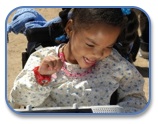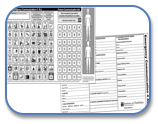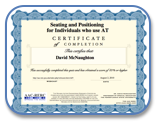If you cannot see the images below, please click here





If you cannot see the images below, please click here |
     |
 |
|
| Upcoming Presentations | Web Resources |
Evidence to support augmentative communication treatment for Primary Progressive Aphasia. Literacy instruction for students with complex communication needs. J. Light & D. McNaughton. PaTTAN Low Incidence Institute, State College, PA. August 8, 2011.
|
 |
|
|
||
|
||
 |
|
|
|
||
|
||
 |
|
|
 |
|
|
 |
|
|
Recent Presentations and Publications |
||
|
||
If you wish to be removed from this mailing list, please hit "reply" and type "remove" in the subject line |
This is a publication of the Rehabilitation Engineering Research Center on Communication Enhancement (AAC-RERC), which is funded by the National Institute on Disability and Rehabilitation Research of the U.S. Department of Education under grant number #H133E080011. The opinions contained in this publication are those of the grantee and do not necessarily reflect those of the Department of Education. |
![]()